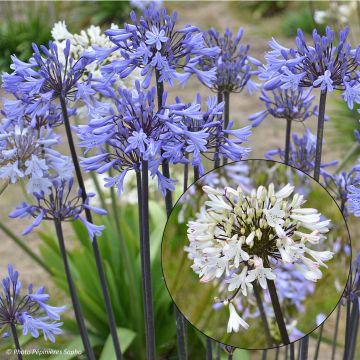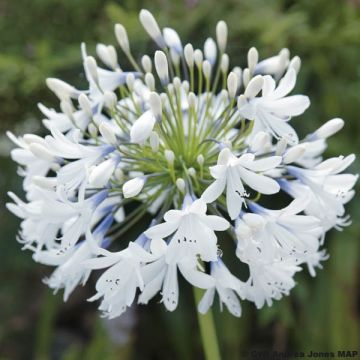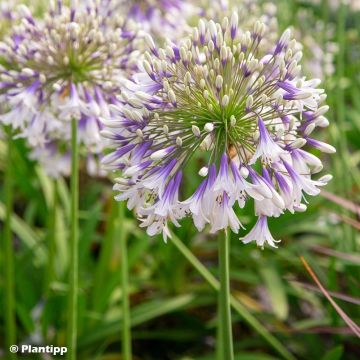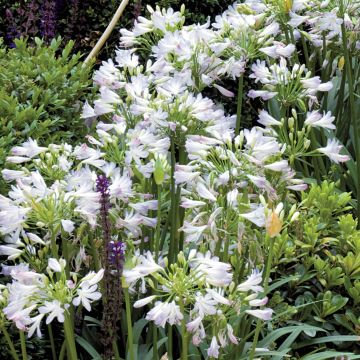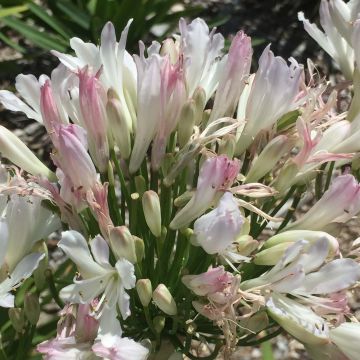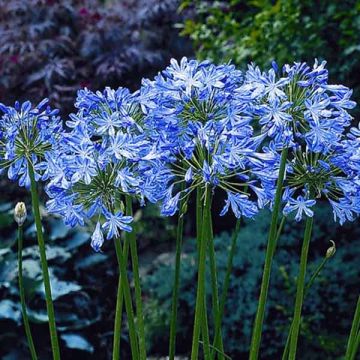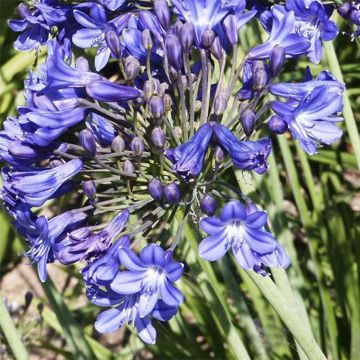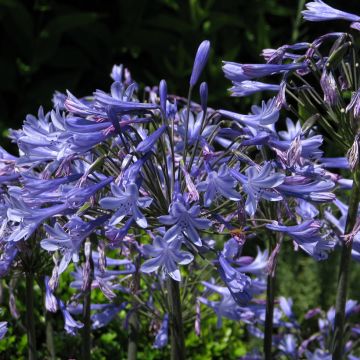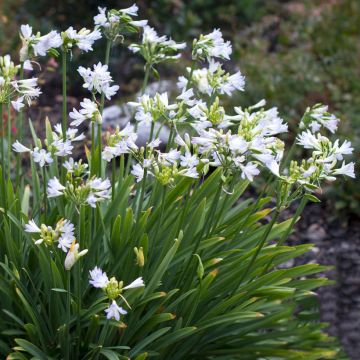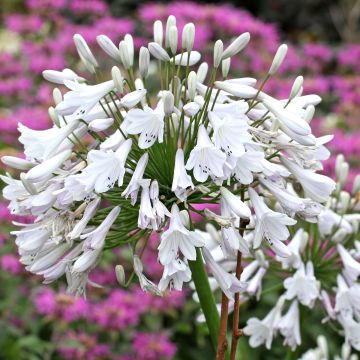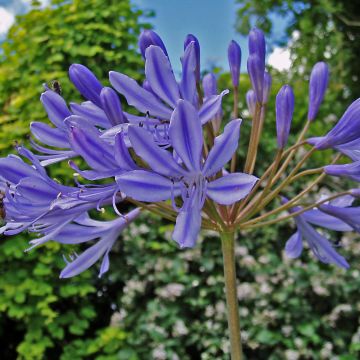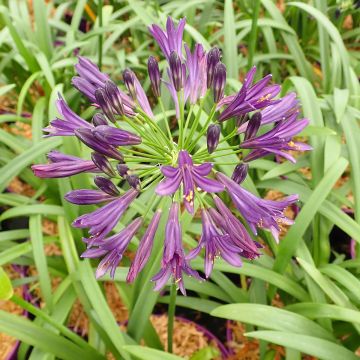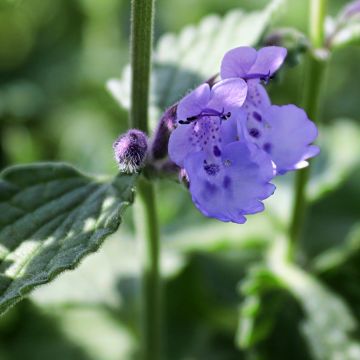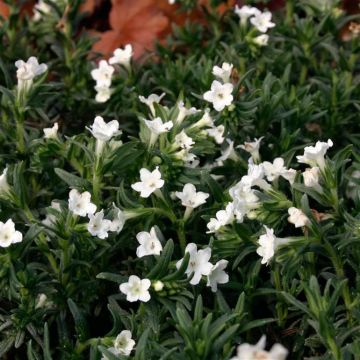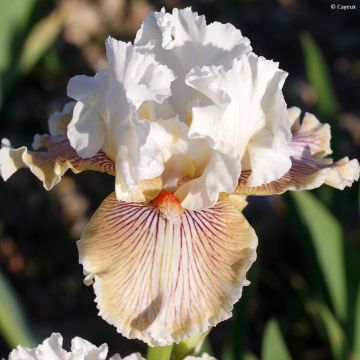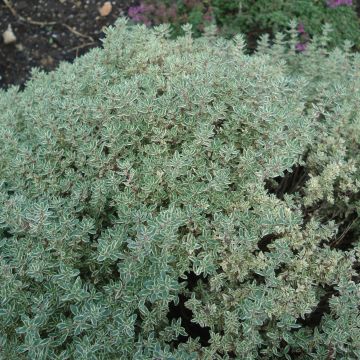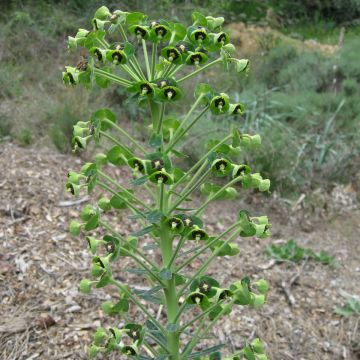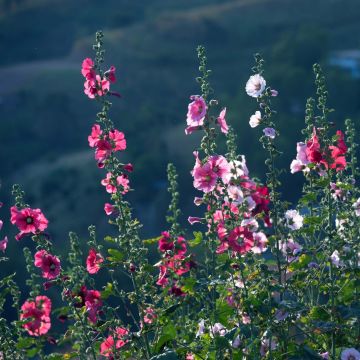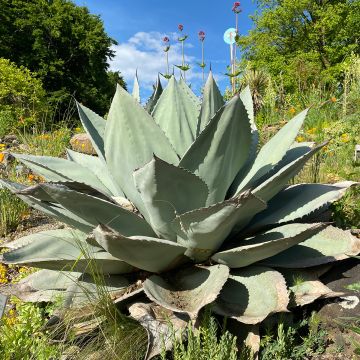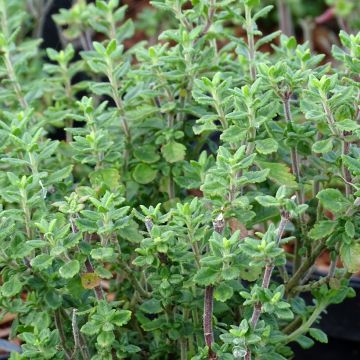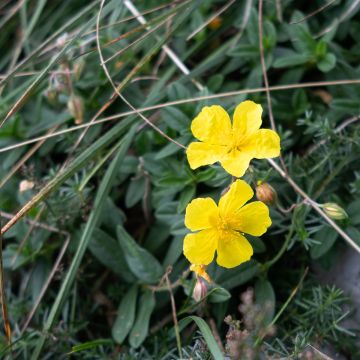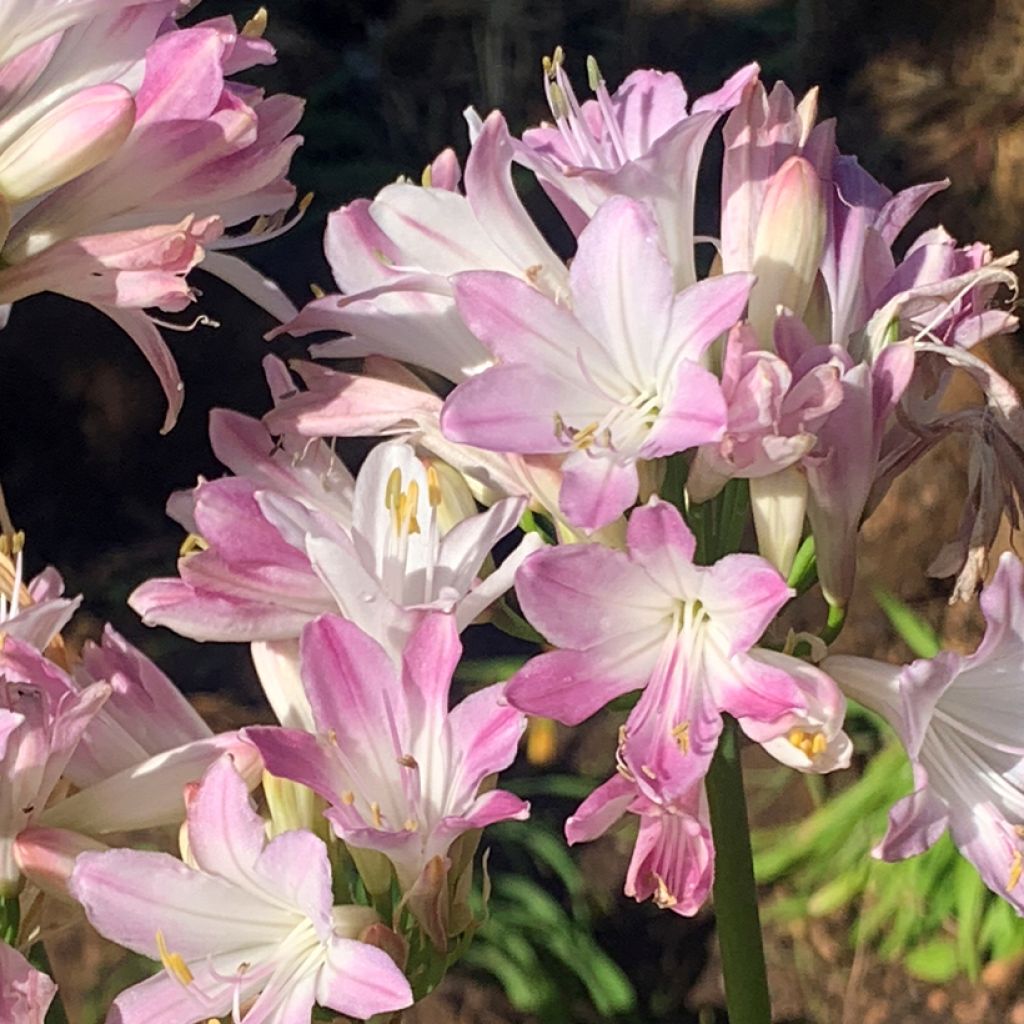

Agapanthus Blush Pink - African Lily
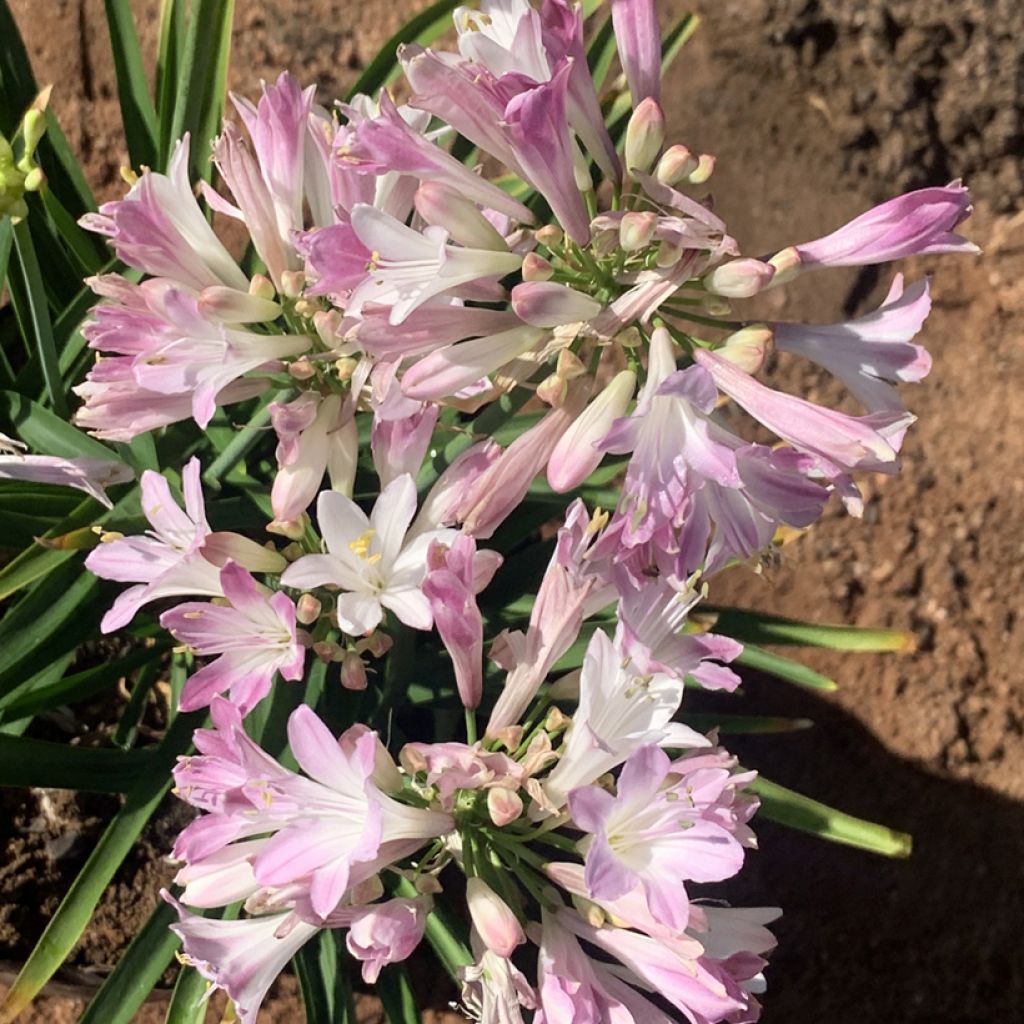

Agapanthus Blush Pink - African Lily
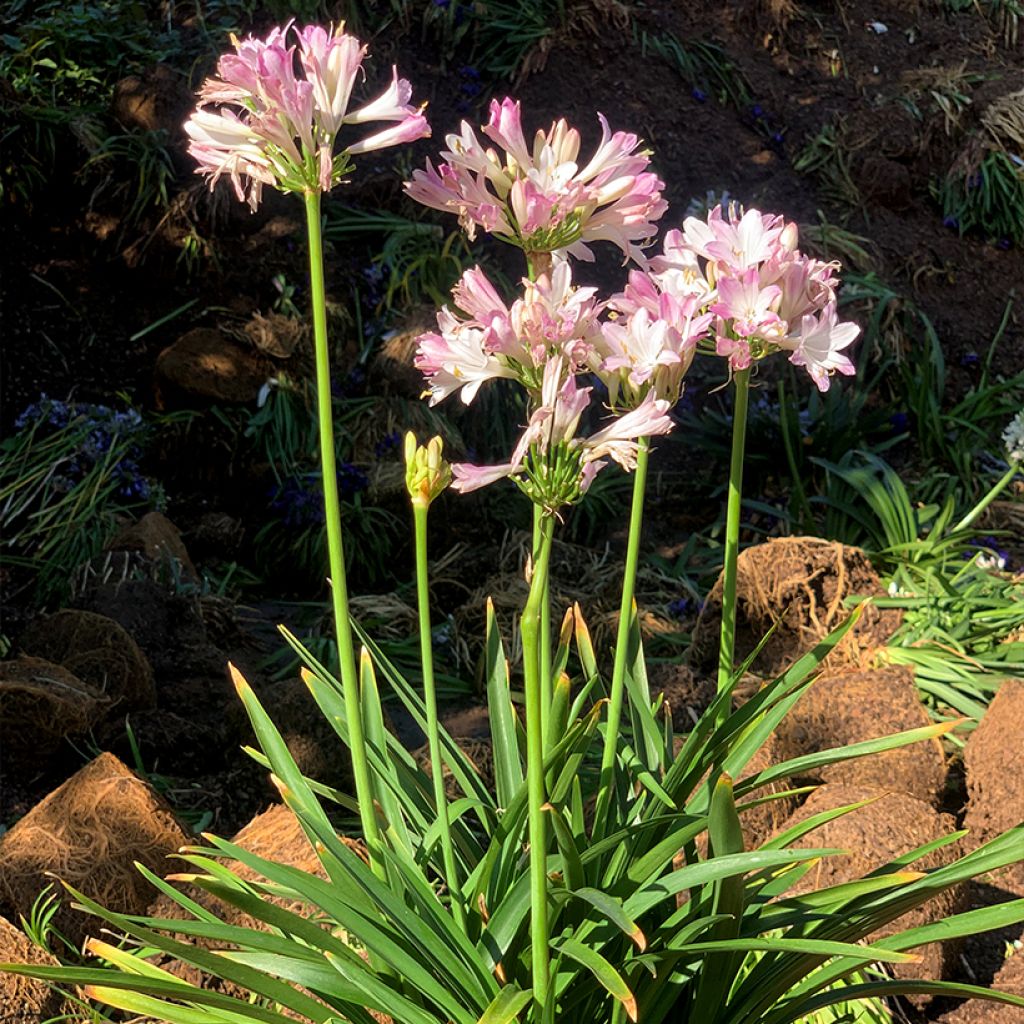

Agapanthus Blush Pink - African Lily
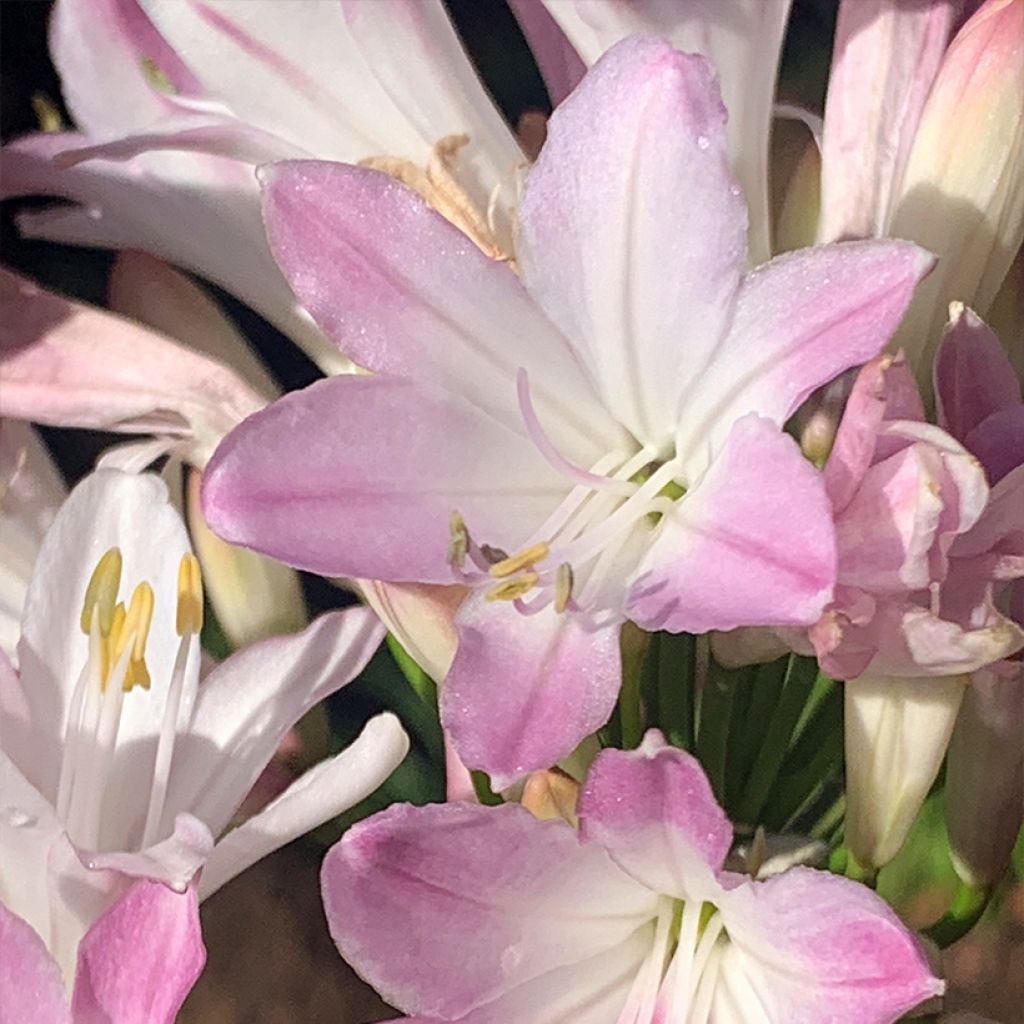

Agapanthus Blush Pink - African Lily
Agapanthus Blush Pink - African Lily
Agapanthus Blush Pink
African Lily, Lily of the Nile
I can't wait to plant it in my garden.
Francine , 14/09/2024
Why not try an alternative variety in stock?
View all →This plant carries a 12 months recovery warranty
More information
We guarantee the quality of our plants for a full growing cycle, and will replace at our expense any plant that fails to recover under normal climatic and planting conditions.
From €5.90 for pickup delivery and €6.90 for home delivery
Express home delivery from €8.90.

Does this plant fit my garden?
Set up your Plantfit profile →
Description
The Agapanthus 'Blush Pink' is, as its name suggests, slightly tinged with pink, a very rare colour among agapanthus. The plant forms a fairly large clump of white umbel flowers with tips tinged with a very soft pink. Under these flower umbels, a superb clump of ribbon-like leaves in a medium green colour, which remains decorative even in winter. The cold resistance of this variety, up to -5°C, allows it to be planted in the ground in mild regions such as the seaside, elsewhere, it will be grown in a pot and protected from the cold during winter.
Agapanthus are plants of the lily family, native to South Africa, which naturally hybridise in nature or in our gardens. Agapanthus 'Blush Pink' is a cultivar introduced to the European market in 2024 and stands out from the usual agapanthus with its pinkish colour and the way its florets are directed upwards rather than horizontally or towards the ground, as well as its upright foliage. Note that this evergreen selection tolerates summer drought better than deciduous forms.
This plant develops and multiplies rapidly from a clump of fleshy rhizomes, forming a dense tuft of linear leaves, dark green and shiny, with a minimum diameter of 25-30 cm, expanding over time. The abundant and prolonged flowering takes place in summer, from July to September, earlier or later depending on the climate, and lasts about 5 weeks. Sturdy and stout stems, about 50 cm tall, bear at their tips dense umbels, about 8-10 cm in diameter, composed of about thirty small campanulate flowers facing upwards and carried by long peduncles.
The 'Blush Pink' agapanthus is still a rare variety in cultivation, delightful, to be planted in the ground in mild regions. In a flower garden, it brings an exotic, pastel and light touch to sunny borders, while requiring little maintenance. This variety should be given a somewhat protected location facing south. Whether in a mass planting, border, rockery or pot, the Agapanthus 'Blush Pink' is suitable for a wide range of uses. It is very beautiful when combined with other mauve, white or blue varieties in a minimalist setting. It is also very decorative in exotic-themed beds with lilies, Kniphofias, Hemerocallis, shrubby salvias or Phlomis tuberosa. It is also a beautiful plant for the terrace or balcony, to be protected in cold climates.
Report an error about the product description
Agapanthus Blush Pink - African Lily in pictures


Flowering
Foliage
Plant habit
Botanical data
Agapanthus
Blush Pink
Amaryllidaceae
African Lily, Lily of the Nile
Cultivar or hybrid
Other Agapanthus - Lily of the Nile
Planting and care
Plant the 'Blush Pink' Agapanthus stumps by covering them with 8-10 cm of good soil so that they are more resistant to the cold. It is preferable to plant them in spring, but it is possible to plant them at the beginning of autumn in regions with mild winters. For container gardening, use 5 plants for a 24 cm pot and protect your pots in winter. Evergreen agapanthus prefer a rich and well-drained soil, enriched with sand, and they tolerate summer drought better than deciduous agapanthus. Water them regularly during the growth period (twice a week) to help them establish. These plants fear excessive moisture in winter, combined with cold temperatures.
Place them in a very sunny and sheltered location, or even in partial shade in the south of our country. An annual compost addition in spring protects and nourishes the shallow roots, promoting prolonged flowering.
Use a well-drained sandy mixture, enriched with leaf compost, compost, and garden soil. This plant seems to prefer shallow containers and will flower abundantly if regularly fed with slow-release fertiliser.
Planting period
Intended location
Care
-
, onOrder confirmed
Reply from on Promesse de fleurs
Mediterranean perennials
Haven't found what you were looking for?
Hardiness is the lowest winter temperature a plant can endure without suffering serious damage or even dying. However, hardiness is affected by location (a sheltered area, such as a patio), protection (winter cover) and soil type (hardiness is improved by well-drained soil).

Photo Sharing Terms & Conditions
In order to encourage gardeners to interact and share their experiences, Promesse de fleurs offers various media enabling content to be uploaded onto its Site - in particular via the ‘Photo sharing’ module.
The User agrees to refrain from:
- Posting any content that is illegal, prejudicial, insulting, racist, inciteful to hatred, revisionist, contrary to public decency, that infringes on privacy or on the privacy rights of third parties, in particular the publicity rights of persons and goods, intellectual property rights, or the right to privacy.
- Submitting content on behalf of a third party;
- Impersonate the identity of a third party and/or publish any personal information about a third party;
In general, the User undertakes to refrain from any unethical behaviour.
All Content (in particular text, comments, files, images, photos, videos, creative works, etc.), which may be subject to property or intellectual property rights, image or other private rights, shall remain the property of the User, subject to the limited rights granted by the terms of the licence granted by Promesse de fleurs as stated below. Users are at liberty to publish or not to publish such Content on the Site, notably via the ‘Photo Sharing’ facility, and accept that this Content shall be made public and freely accessible, notably on the Internet.
Users further acknowledge, undertake to have ,and guarantee that they hold all necessary rights and permissions to publish such material on the Site, in particular with regard to the legislation in force pertaining to any privacy, property, intellectual property, image, or contractual rights, or rights of any other nature. By publishing such Content on the Site, Users acknowledge accepting full liability as publishers of the Content within the meaning of the law, and grant Promesse de fleurs, free of charge, an inclusive, worldwide licence for the said Content for the entire duration of its publication, including all reproduction, representation, up/downloading, displaying, performing, transmission, and storage rights.
Users also grant permission for their name to be linked to the Content and accept that this link may not always be made available.
By engaging in posting material, Users consent to their Content becoming automatically accessible on the Internet, in particular on other sites and/or blogs and/or web pages of the Promesse de fleurs site, including in particular social pages and the Promesse de fleurs catalogue.
Users may secure the removal of entrusted content free of charge by issuing a simple request via our contact form.
The flowering period indicated on our website applies to countries and regions located in USDA zone 8 (France, the United Kingdom, Ireland, the Netherlands, etc.)
It will vary according to where you live:
- In zones 9 to 10 (Italy, Spain, Greece, etc.), flowering will occur about 2 to 4 weeks earlier.
- In zones 6 to 7 (Germany, Poland, Slovenia, and lower mountainous regions), flowering will be delayed by 2 to 3 weeks.
- In zone 5 (Central Europe, Scandinavia), blooming will be delayed by 3 to 5 weeks.
In temperate climates, pruning of spring-flowering shrubs (forsythia, spireas, etc.) should be done just after flowering.
Pruning of summer-flowering shrubs (Indian Lilac, Perovskia, etc.) can be done in winter or spring.
In cold regions as well as with frost-sensitive plants, avoid pruning too early when severe frosts may still occur.
The planting period indicated on our website applies to countries and regions located in USDA zone 8 (France, United Kingdom, Ireland, Netherlands).
It will vary according to where you live:
- In Mediterranean zones (Marseille, Madrid, Milan, etc.), autumn and winter are the best planting periods.
- In continental zones (Strasbourg, Munich, Vienna, etc.), delay planting by 2 to 3 weeks in spring and bring it forward by 2 to 4 weeks in autumn.
- In mountainous regions (the Alps, Pyrenees, Carpathians, etc.), it is best to plant in late spring (May-June) or late summer (August-September).
The harvesting period indicated on our website applies to countries and regions in USDA zone 8 (France, England, Ireland, the Netherlands).
In colder areas (Scandinavia, Poland, Austria...) fruit and vegetable harvests are likely to be delayed by 3-4 weeks.
In warmer areas (Italy, Spain, Greece, etc.), harvesting will probably take place earlier, depending on weather conditions.
The sowing periods indicated on our website apply to countries and regions within USDA Zone 8 (France, UK, Ireland, Netherlands).
In colder areas (Scandinavia, Poland, Austria...), delay any outdoor sowing by 3-4 weeks, or sow under glass.
In warmer climes (Italy, Spain, Greece, etc.), bring outdoor sowing forward by a few weeks.

































